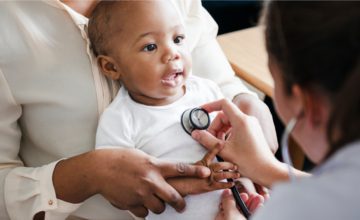Purpose
Observation, screening, and assessment are collaborative processes aimed at supporting healthy development in infants and young children.
These practices are essential for:
- Identifying developmental milestones and areas of concern early ]
- Informing individualized care and intervention planning
- Tracking developmental progress over time
- Engaging families in understanding and supporting their child’s development
Effective assessment practices should:
- Use multiple sources of information, including direct observation, record review, standardized tools, and caregiver input
- Be collected across contexts (i.e., home and early childhood education settings) and over time
- Be sensitive to cultural, linguistic, and individual differences
- Employ both formal and informal methods to capture a comprehensive picture of the child’s development
- Maintain transparency, ensuring families are informed and involved in the process
Key Components
- Observation: Systematic watching and recording of children’s behavior and interactions to understand their developmental progress, temperament, emotional regulation, social relationships, and need for individualized care and instruction, across contexts and time.
- Screening: Brief procedures to identify children who may need further evaluation, conducted universally at key developmental stages or targeted when concerns arise.
- Evaluation: Comprehensive assessments using standardized tools to determine a child’s functioning across various developmental domains, and review of records (medical and health records, anecdotal running records, checklists and rating scales, and Individualized Family Service Plans or Individualized Education Plans) are essential for diagnosing and planning interventions.
- Assessment Information Gathering: Collecting data through observations across settings, caregiver interviews, standardized tools, and professional judgment to inform understanding and planning.
- Cultural and Linguistic Considerations: Adapting assessment practices to reflect diverse cultural child-rearing practices, employing bilingual professionals or interpreters, choosing validated tools, and engaging families as cultural informants.
Distinct Roles: Educators and Clinicians
While educators and clinicians collaborate in supporting infant and toddler development, each has unique responsibilities and approaches within observation, screening, and assessment processes.
For Early Childhood Educators
Educators integrate observation and developmental assessment seamlessly into daily routines and interactions, aligning with developmentally appropriate practice principles and early education standards. Key practices include:
- Embedded Observation: Intentionally observing children during play, routines, and structured activities to gather authentic insights into their development.
- Documentation: Recording observations through anecdotal notes, checklists, and work samples to inform curriculum planning and individualized instruction.
- Family Engagement: Sharing assessment information with families to support a collaborative approach to each child’s development.
- Curriculum Planning: Using assessment data to tailor learning experiences that meet each child’s developmental needs and interests.
- Professional Reflection: Engaging in reflective practices to continually improve teaching strategies and program effectiveness.
Educators play an important role in early identification and connecting families to appropriate supports when they see or suspect health, developmental, or mental health challenges in a very young child. If educators identify or suspect an infant or toddler in their care has one or more of these concerns, they should collaborate with families, the appropriate service provider(s), or both, to address the child’s specific needs.
For Clinicians
Clinicians focus on identifying and addressing developmental concerns through specialized assessments and interventions. Their practices include:
- Targeted Screening: Conducting brief, structured procedures designed to quickly identify potential developmental, behavioral, or social-emotional concerns that may warrant further evaluation. Screening tools help determine whether a child’s development appears to be on track or if additional assessment is needed to explore possible delays or differences.
- Comprehensive Evaluation: Gathering data and conducting in-depth assessments using standardized instruments that provide information related to physical health, psychosocial stressors, protective factors, development, and quality of relationships that can be used to inform diagnosis and treatment
- Developmentally Appropriate Diagnosis: Using tools such as the DC:0–5™ Diagnostic Classification of Mental Health and Developmental Disorders of Infancy and Early Childhood to guide the diagnostic process with infants, young children, and their families. DC:0–5 approaches diagnosis from an infant and early childhood mental health perspective which is developmentally informed, relationship-based, and contextually and culturally responsive.
- Interdisciplinary Collaboration: Working with educators, families, and other professionals to develop and implement individualized support plans.
- Cultural Competence: Ensuring assessments are culturally and linguistically appropriate, and interpreting results within the context of the child’s background.
- Ethical Practice: Advocating for the use of valid and reliable assessment tools and being transparent about the limitations of assessments when necessary.
Clinicians play a critical role in addressing health, developmental, or mental health concerns in very young children. To provide effective support, they should collaborate with families and partner with early childhood educators to gather insight, share information, and align care strategies that meet the child’s individual needs across home, early learning, and clinical settings.
Working Together to Support Every Child
Observation, screening, and assessment are integral to supporting the development of infants and young children. By understanding and respecting the distinct roles of educators and clinicians, and by collaborating effectively, professionals can ensure that each child receives the individualized support they need to thrive.







